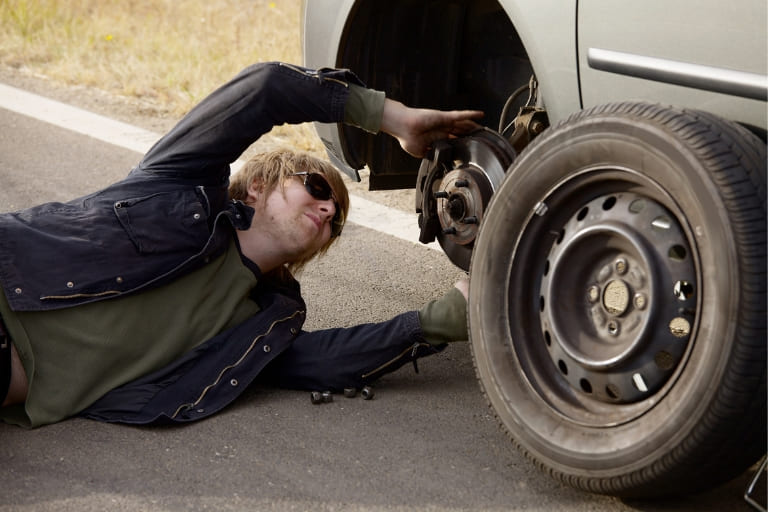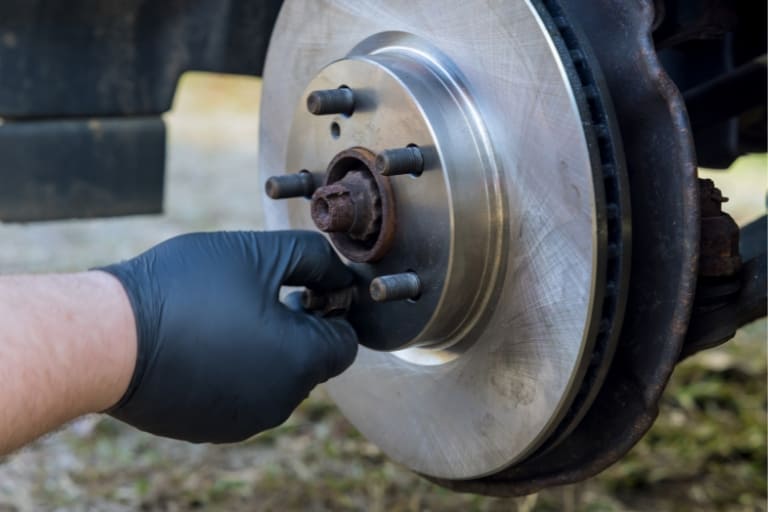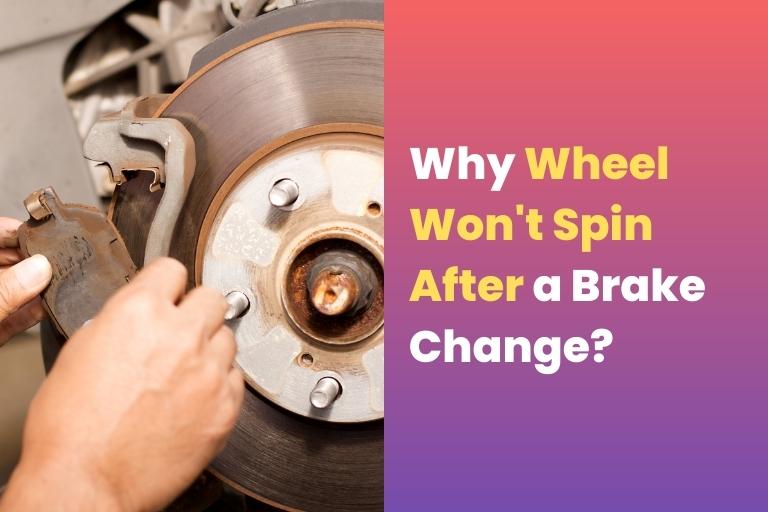When you change your car’s brake pads or discs, one potential issue is that the wheel does not spin properly. This can happen for various reasons, including a jammed caliper, broken brake lines, or faulty brake component installation.
It is critical to know what to do in such a case since driving with a non-spinning wheel can lead to major safety issues such as lower braking efficacy, uneven tire wear, and loss of control while driving.
This blog will give you vital ideas on how to manage this issue and protect the safety of yourself and others on the road, whether you are a vehicle enthusiast or a newbie.
Contents
Common causes of the wheel not spinning after a brake change
Here are some common causes of the wheel not spinning after a brake change:
Brake caliper piston stuck
The brake caliper piston can become stuck owing to rust, dirt, or debris, stopping the wheel from rotating. As a result, the brake pads may remain in contact with the rotor, resulting in a hot wheel, a burning odor, and a grinding noise.
Brake pads stuck
Due to rust, debris accumulation, or faulty installation, brake pads might become caught against the rotor, preventing the wheel from spinning freely. This might lead to decreased braking performance and a burning odor. A technician may check for buildup on the pads and rotor and guarantee appropriate installation. Changing the pads may also be required to resolve the problem.
Parking brake engaged
When the parking brake is not disengaged following a brake change, the brake remains engaged, preventing the wheel from spinning freely. This might result in diminished acceleration and poor braking performance. Disengage the parking brake using the release lever or button near the driver’s seat to resolve the issue.
Diagnosing If Wheels Don’t Spin After Brake Change
If your wheel doesn’t spin after a brake change, there are several steps you can take to diagnose the issue:
Visually inspect the brakes

If a wheel won’t spin after a brake change, visually checking the brakes is vital in diagnosing the problem. Examine the brakes for visual symptoms of damage or wear, such as warped rotors, worn brake pads, or leaking brake fluid. Examine the braking system for any loose or missing components, such as bolts, clips, or pins that might be causing the problem. Check that the brake pads are properly placed and are not excessively worn.
Test the brakes
If a wheel doesn’t spin after a brake change, testing the brakes might assist in pinpointing the problem. To determine whether this resolves the problem, apply and release the brakes. To avoid accidents, it is critical to do this carefully, such as in an empty parking lot or on a private road. If applying and releasing the brakes does not cure the problem, it might be a symptom of something more serious, such as a jammed caliper or a broken rotor.
Also, Check: Brake Shuddering After New Rotors and Pads
Check for error codes
Checking for error codes using a diagnostic tool can be a useful step in diagnosing the issue if a wheel won’t spin after a brake job. A diagnostic tool can read codes from the car’s computer system and identify any issues related to the brake system. Error codes related to the anti-lock brake system (ABS) or brake pressure sensor can help pinpoint the cause of the issue.
How to Fix if Wheel Won’t Spin After a Brake Change

The solution for fixing the issue of a wheel not spinning freely after a brake change depends on the root cause of the problem. Here are some possible solutions:
Release the parking brake
This is a step-by-step procedure for resolving the problem of a wheel not spinning after a brake job caused by the parking brake:
- If your electronic parking brake system isn’t working properly, look for the manual release tool among the spare tire tools.
- Install the long brake release tool after removing the screwdriver blade from the handle.
- Remove the access plug from the spare tire well at the front.
- Insert the tool, activate the brake motor, then “unscrew” the brakes to release them.
Replace damaged components
If you feel that damaged components are causing the problem of a wheel not spinning after a brake replacement, you should get your car inspected by a professional. A technician would be able to diagnose the problem and repair any broken components in order to resolve it.
A general step-by-step method for replacing broken components is provided below:
- Request that a mechanic diagnose the problem and identify any damaged components.
- Acquire the required replacement components.
- Replace the damaged components according to the manufacturer’s recommendations.
- To check that the problem has been rectified, test the car.
Lubricate moving parts
If you feel that a lack of lubrication is to blame for a wheel not spinning (rear or front) after a brake change, lubricating the moving parts may assist. Here’s a standard step-by-step procedure for lubricating moving parts:
- Determine which moving parts require lubrication. Caliper pins, caliper brackets, and other components may be included.
- Choose the right lubricant for your vehicle’s braking system. For advice, see your owner’s handbook or a professional.
- Clean the moving components of any dirt or debris.
- Apply the lubricant to the moving components as directed by the manufacturer.
- To check that the problem has been rectified, test the car.
Related Article:
- Can You Use Front Brake Pads on The Rear?
- Why Does My Car Shake After Changing the Brake Pads?
- How to Install Anti-Rattle Clips on Brake Pads
- How Long Do Brake Pads Last: Brake Pad Lifespan Explained
- Driving Without Brake Pads: How Long is Safe?
- How Long Do Brake Pads Last: Brake Pad Lifespan Explained
- How to Fix New Ceramic Brake Pads Making Grinding Noise
- Ceramic vs. Semi-Metallic Brake Pads: Which is Better?
- Why Are My Brakes Grinding After New Pads And Rotors
- Ceramic vs OEM brake pads
- Ceramic vs Organic Brake Pads
- Ceramic vs Carbon Fiber Brake Pads
Conclusion
A wheel that does not spin after a brake change might result from a blocked caliper piston, stopped brake pads or an engaged parking brake. To diagnose the problem, visually inspect the brakes, test them, and look for error codes. Release the parking brake, replacing broken components, and lubricate moving parts are all possible treatments.
To avoid this problem in the future, follow the manufacturer’s suggested braking system maintenance routine. Frequent braking system maintenance and examination for wear and damage can aid in preventing problems. It is critical to have a skilled mechanic inspect the brakes if any unexpected sounds or actions occur while driving.
Lastly, while changing brake system components, it is critical to follow proper procedures and ensure that they are mounted correctly and securely to guarantee safe and dependable braking performance. Properly maintaining the braking system may avoid the discomfort and safety issues connected with a wheel that does not spin after a brake replacement.
